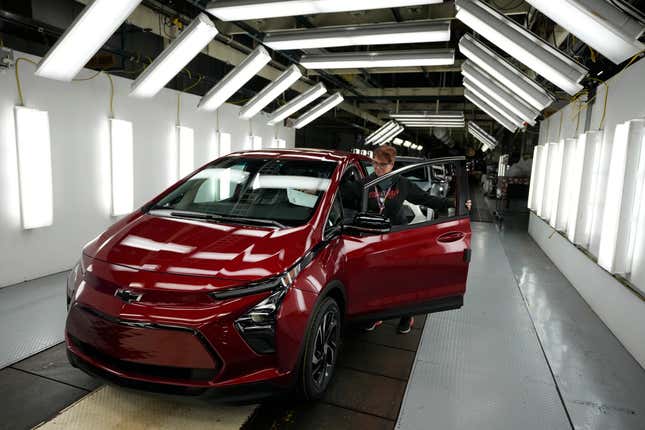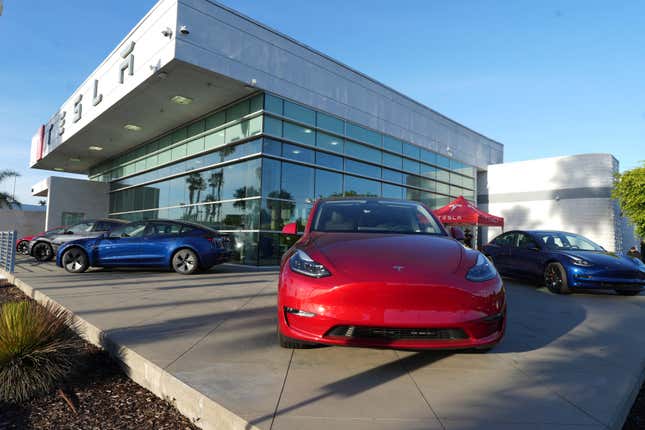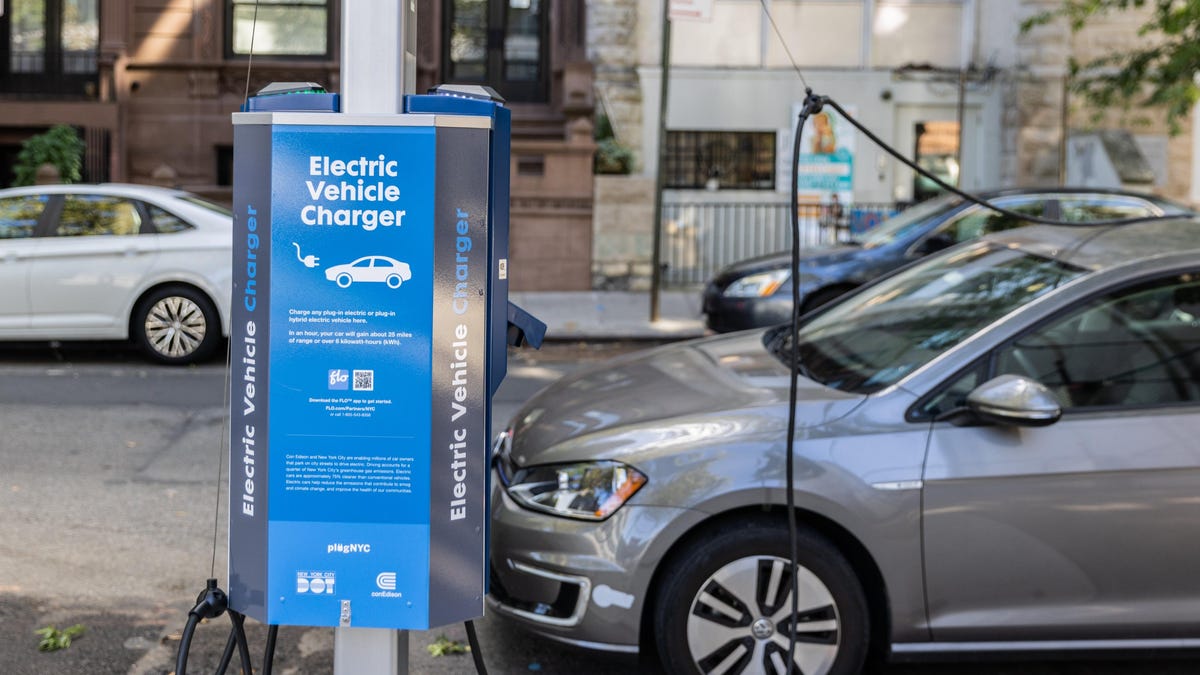I worked at the Tesla store in Boston while I was studying at Boston University, around the same time that the Model 3 was super delayed and reservation holders were pissed, but I talked to a lot of folks who were considering their first EV and it was my job to help them understand day-to-day EV ownership. Owning an EV is different than owning an internal combustion engine vehicle, and for those looking into owning their first EV, it can be intimidating. Here are three important things to consider before owning your first EV.
What’s your charging solution?
The biggest difference between ICE vehicle ownership and EV ownership comes when you have to refuel your car. Folks who live in a single-family home and have a garage have the easiest avenue to happy EV ownership, but it may still be costly to upfit your garage with a Level 2 EV charger. For folks who don’t have their own garage or private parking situation, EV ownership becomes less convenient.
If you can charge at home whether in your own garage or if your building has chargers on the premises, plug your car in at night and you’ll be good to go every morning. If you can’t charge at home, you will be reliant on public charging stations which are notoriously fickle. If you still go into the office, your office may offer charging stations which make for convenient charging.
If you will be completely reliant on public charging stations, it’s important to understand what to expect. Public charging stations offer different speeds of charging, but you’ll probably want to find a Level 3 charger so you aren’t wasting hours waiting for your car to charge. Level 3 charging is likely to be more expensive than charging at home and more expensive than Level 2 chargers, but still likely less expensive than filling an ICE car’s gas tank. Public chargers will be in different states of disrepair, so you may have to try a few different charging stations before finding one that works best. It is important to note that some EVs can’t accept high-speed charging, so make sure you understand your car’s limitations.
Tesla owners enjoy Supercharger access which is a massive boon, and I think the biggest selling point for owning a Tesla. The Tesla Supercharger network is generally more reliable and more abundant than other public chargers, so if your first EV is a Tesla, public charging is less of a concern. Due to Tesla’s unique NACS charging plug, non-Tesla EVs cannot widely charge using the Tesla Supercharger network, but this is changing slowly across the U.S. so soon most EVs will be able to access the Supercharger network.
Understanding Federal Tax Incentives

EV tax incentives are confusing, and they just changed in 2024, so it’s important to understand these incentives before showing up at the dealer since many EVs don’t qualify for the credit. Make sure you check your specific model’s trim to ensure it still qualifies for the incentive. The new 2024 rules actually make it easier to apply the money to the price of your EV, but the number of EVs that qualify for the money has decreased significantly. Here are the 10 most important things to know about the 2024 EV tax credits as of Jan. 1 according to Investors Business Daily,
A tax credit of up to $7,500 is available on new and used EVs that meet certain criteria.
The amount of the tax credit depends on where the EVs are made, where their battery components and minerals come from, how much they cost, and the buyer’s annual income.
The credit will be available for eligible buyers as a discount at the dealership when they buy the vehicle. No more waiting for tax season.
To qualify, the EV must be manufactured in North America and have an MSRP below $80,000 for an SUV and $55,000 for a sedan, wagon, or hatchback.
To qualify for the first $3,750, some of the EV’s battery components must be produced or assembled in North America.
To get another $3,750 (for the full $7,500 tax credit) a portion of the critical minerals in the EV battery must be mined or processed in the U.S. The minerals also could come from a country that is a U.S. free-trade agreement partner. Or, they must have been made from materials recycled in North America.
The percentages of the components or minerals that need to be sourced under those rules go up every year, beginning this year.
Starting in 2024, EVs with components from countries that have been designated “foreign entities of concern” (FEOC) will no longer be eligible for a tax credit. FEOC includes entities that are owned by, controlled by or subject to the jurisdiction or direction of a government of a foreign country that is a covered nation. Covered nations currently include China, Russia, Iran, and North Korea.
The tax credit is nonrefundable.
Check to be certain your dealer can give you the EV Tax credit. The dealer must be registered on a new platform, IRS Energy Credits Online, for a buyer to receive a point-of-sale EV tax credit.
EV Limitations

Electric vehicles lose up-to half of their total range estimates in temperatures below freezing. If you live in a cold climate and you don’t have access to a charging solution at home, this significant decrease in range can cause serious challenges for you. This winter has been brutal, and stories of EVs dying while waiting in long lines to access public chargers were everywhere. This is something that first-time EV buyers might not understand, but it can lead to massive headaches. If you live in a cold climate and cannot charge at home but still want an EV, plan ahead. Anticipate your car’s normal range to drop by about half, and keep your car charged up so you don’t end up in a news article about EVs dying while waiting in line to charge. EV’s charge slower in cold temperatures, too, so allot extra time when you do head to a public charger. If you plan to charge at home, this is less of an issue.
Many EVs are littered with touch screens and few physical controls, so if you don’t consider yourself to be tech savvy, make sure you have a thorough understanding of your car’s interfaces. Teslas in particular have done away with most physical controls, forcing owners to use the touchscreen for every single control from the lights to the wipers to the climate control. Additionally, most public charging stations require users to download apps and make accounts to charge, so make sure you are equipped to navigate these tech-heavy processes.
Range is more concerning for EV owners than ICE vehicle owners since charging is not yet as universal as getting gas and takes longer. This ties in with understanding your charging situation. If you can charge at home, most modern EVs have sufficient range to get you through a day, even if you have to take some detours. If you plan to charge exclusively at public chargers, make sure the EV you’re considering has ample range to handle your day-to-day driving habits, and determine how stopping to charge can play into your routine. Many public chargers are located at or near shopping centers, so you can plan to use a public charger while you do your weekly grocery run or while you’re at the gym. Cold climates will impact this, however.

In conclusion, if you are considering buying your first EV, be sure that you have a thorough understanding of what to expect from ownership and day-to-day operation. If you can charge at home, you have the highest likelihood of loving EV ownership. If you plan to rely on public chargers, especially if you live in a cold climate, EV ownership might not be right for you. We are still in the early adopter stage of EV technology, but as the U.S. transitions to a unified charge port and Tesla opens Supercharger access to other brands, EV ownership will become less prohibitive.
